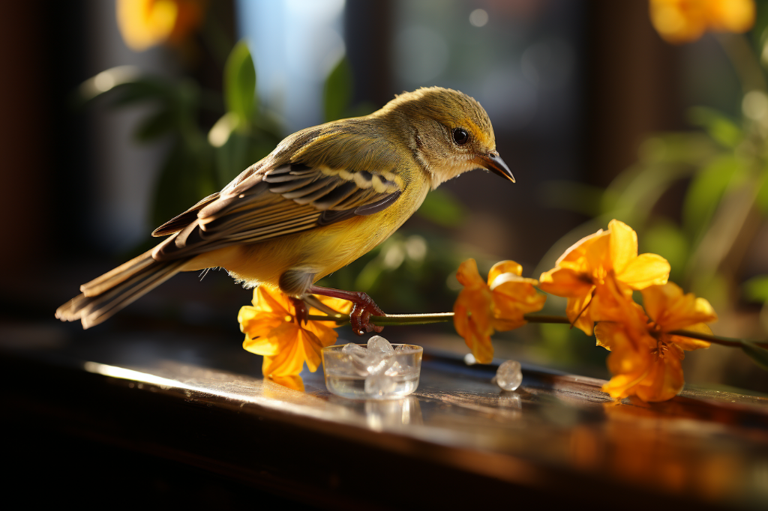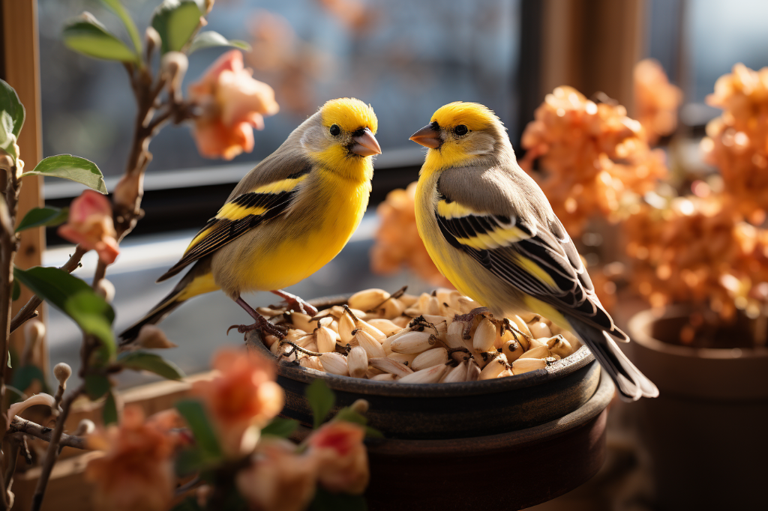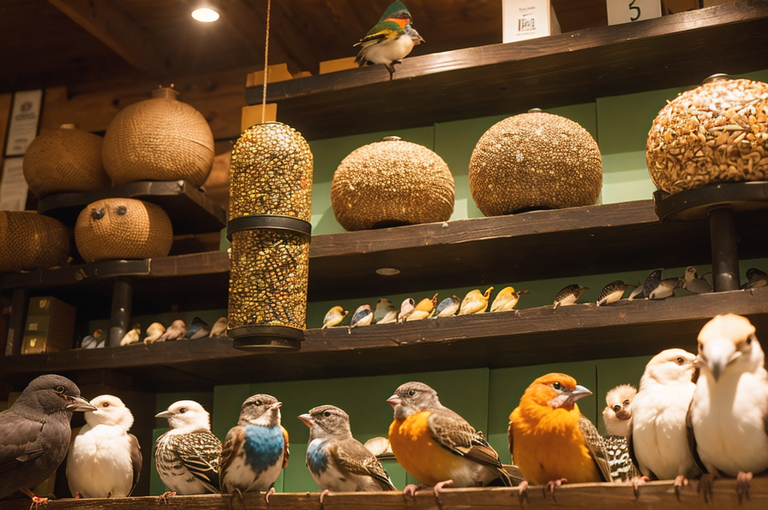The Consequences of Feeding Bread to Birds: Addressing Misconceptions and Promoting healthier Practices

This article discusses the negative effects of feeding bread to birds, highlighting associated health problems, habitat destruction, and behavioral issues. It advocates for natural bird food options.
Understanding the Detriments of Feeding Bread to Birds
Standing in our kitchens, slicing off a piece of bread, we’ve often wondered: do wild birds eat bread? The answer has its roots embedded deep in our understanding of avian needs.
The Nutritional Deficiency of Bread for Avian Consumption
Like the seed that sprouts a mighty oak, the foundations of bird health lie in their diet. Birds require a rich mix of proteins, fats, and vitamins for their survival – a far cry from the nutritionally devoid landscapes of a bread crumb. Bread is akin to the barren desert after the fleeting monsoon – seemingly satisfying, yet devoid of the substance required for avian vibrancy and vitality.
Health Conditions in Birds Due to Bread Consumption
Just as we, humans, are susceptible to health conditions due to poor dietary habits, so is the case with our winged companions. Overconsumption of bread could lead to a plethora of health issues resembling a storm ridden sky far from the melodious symphony of bird chirps I find so soothing. Respiratory infections, aspergillosis, and the sad spectacle of ”angel wing” where the wings of waterfowl grow outwards unnaturally, hindering their ability to fly are just a few conditions sparked by this seemingly harmless act of generosity.
Impact of Bread on Birds’ Natural Behavior
The cruel irony of our kind intentions lies in encouraging unhealthy eating behaviors in these feathered souls. We unknowingly nudge them towards preferring bread, leading them away from healthier options. Our nutritious intentions create a ripple of adverse effects, encouraging them to stray from their instinctual feeding habits.
Therein lies the dilemma of our feathered friends: while they might partake of the bread we offer, it ultimately equates to trinkets of fool’s gold. It’s a stark reminder for us all: in our pursuit to nurture, we must ensure our actions align with the true needs of these beautiful creatures.

Recognizing the Harmful Effects of Overfeeding Birds
As an ornithologist and a relentless pursuer of avian truths, I feel a responsibility to disclose the less understood implications of a seemingly harmless act. Ever asked yourself, can wild birds eat bread? While the immediate response might be positive, the broader repercussions are more disconcerting.
Habitat Destruction Due to Overfeeding
While scattering breadcrumbs or seeds might seem like a carefree act, it can lead to an abundance of waste and pollution, causing significant harm to bird habitats. Unconsumed food attracts a variety of pests and vermin, disrupting the balance within these ecosystems. It is reminiscent of a scene where good intentions morph into unintended nightmares.
Spread of Disease Catalyzed by Excess Feeding
Overfeeding our feathered friends can also catalyze the spread of disease. The influx of food attracts an unnaturally large congregation of birds, heightening the potential for disease transmission. It’s like throwing a massive city wide party during an influenza outbreak. While it may appear innocent at first, the toll taken on these innocent creatures can be severe.
The Misconception About Overfeeding and Bird Migration
A prevailing misconception is that continuous feeding inhibits bird migration. While it may seem rational to draw such a connection, the truth resides elsewhere. Many waterfowl species, for instance, reside in city parks all year round, courtesy of their opportunistic dietary habits. Overfeeding merely augments their population in these urban habitats, without affecting their instinctual migration patterns.
Guided by my love for birds and commitment to truth, I strive to bring these concerns into the light. After all, a deeper understanding breeds a more refined approach to our interactions with our feathered friends. So next time you ask can wild birds eat bread remember: actions, however good intentioned, can bring about unintended consequences. Understanding these can allow us to take better care of our avian companions.

Evaluating the Suitability of Other Human Foods for Birds
One never asks, can i feed wild birds bread?, while indulging in our human snack foods. The bag of chips beckons while I sit in my backyard enjoying the avian ballet, but these treats, laden with salt and additive ingredients, cannot sustain the delicate composition of our feathered friends. Snack foods such as chips, crackers, and doughnuts have the potential of impeding the growth and overall health of birds. 🐦💔
Impact of Snack Foods on Birds’ Health
Ruffling through the nutritional values of our typical human fare, it becomes evident that many of our staples hold negligible benefits for birds. From the microscopic nutrients to the larger macro elements, they differ vastly from what birds require for their nutritional needs. Our chips are devoid of the beneficial proteins they need to thrive, and our sweets are but vacant calories to their finely tuned metabolisms.
The Relative Nutritional Value of Various Human Foods
When we analyze the veritable buffet of our pantry in comparison to a bird’s diet, the disparities become clear. Each species graces our planet with a specific dietary plan, a plan sadly not involving our leftover pizza crusts or stale crackers. From seeds, berries, and worms to the occasional mosquito treat, their dietary preferences are undoubtedly healthier and far more balanced than ours. 🍕🚫
Understanding Potential Health Risks of Incorrect Feeding
A crouton launched at a pigeon or a duck fed with moldy bread can ring the death knell for our avian companions. Incorrect feeding methods can cause health risks that we aren’t even aware of – from indigestion to deadly diseases. Human meals have been designed over thousands of years to suit us, not the beautifully beaked creatures that grace our lives. Plan to share? Just remember, not every feast we have suits their delicate stomach nor nourishes their vibrant plumages. Keep their meals in the wild, just as we love them. 🦢🍞💔

Promoting Health Conscious Feeding Practices for Birds
On this kaleidoscopic canvas we call life, nothing renders the scene quite as vivid as the sprightly flutters of our avian companions. They plume the sky with their vivid hues and their enchanting arias form the melodic undertones to our everyday. Sustaining these fragile masterpieces or our realm demands health conscious feeding practices, an aspect I advocate proactively.
Emphasizing the Need for Natural Food Acquisition
A wild bird book I perused recently illustrated a crucial point: these celestial creatures are designed to forage their own food from nature. This cultivates their survival instincts and allows them to savor the diverse pantry Mother Nature offers. As well meaning as we may be, a ’free meal’ can disrupt their dietary preferences and induce unhealthy dependencies.
Suggesting Suitable Foods for Birds
A carefully curated outdoor bird menu may encompass seeds, grains, nuts, fruits, oats, and refined rice, each a nutritious and bird friendly option. Savory sunflower seeds, bright gleaming berries, and kernels of corn, each serve a unique purpose in their sustenance. Birdseed mixes also form a delicatessen of choice, complete with multiple elements, nourishing and catering to their varied tastes.
Explaining Ideal Feeding Frequency and Quantity
Our feathered friends benefit greatly from measured indulgence, their intake calibrated to suit their diminutive physique. As bountiful as nature is, it doesn’t deliver a surplus, which encourages birds to maintain a balanced foraging pattern. We too, as responsible bird lovers, must practice sparing feeding and caution with quantity to avoid disrupting their natural feeding behavior.
Just like every note in an avian symphony is vital to the harmony, it’s these seemingly small aspects we must stitch together to ensure that our airborne companions continue to grace the skies, as animated brush strokes on life’s vibrant canvas.
Key Takeaways from Better Bird Feeding Practices
As a fervent believer in preserving avian health, I feel compelled to reiterate the risks of unsuitable foods for our feathered friends. A simple question do wild birds eat bread? Yes, they might. But a more pertinent inquiry should be can wild birds eat bread without consequential health risks? The answer is an emphatic no. Bearing in mind my wild bird book, bread, despite its convenience, is not a dietary staple in a bird’s natural habitat and can lead to detrimental health issues such as malnutrition and digestive troubles.
Recognizing the Consequences of Overfeeding
Moreover, the act of overfeeding birds, often seen as an act of kindness, can surprisingly wield unintended negative consequences. Beside health issues for the birds, such as obesity and disease spread, it can disrupt natural species distribution and breed dependence on human intervention.
The Importance of Promoting Natural Feeding Habits
Grounding my assertions in the respectful understanding of our chirping companions, I underscore the importance of promoting natural feeding habits. Feeding birds, though a heartwarming and educational activity, should never come in the way of encouraging their innate foraging instincts. It is crucial to strike a balance, providing supplemental feeding during scarce times while still letting them fend for themselves in fair weather.
In conclusion, the question can I feed wild birds bread should be swapped for ”how can I responsibly assist wild birds?” This change in mindset, along with a deep rooted determination to understand them better, are the real bread and butter of wild bird conservation.


